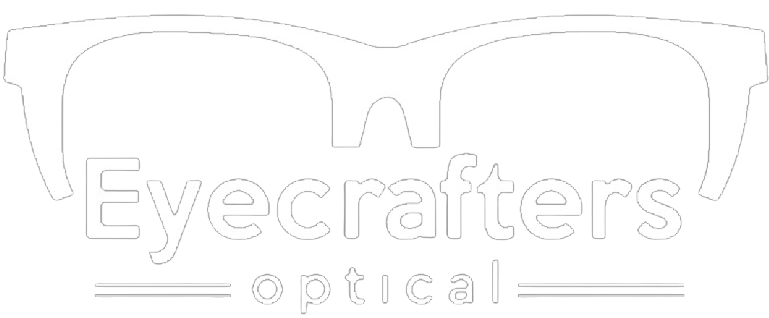CONTACTS TYPE
The Basics: Different Types of Contact Lenses
There are many types of contact lenses available that correct vision problems (refractive errors).
Some options include soft lenses, hard lenses, bifocal lenses, toric lenses, and multifocal lenses. The type of lens you need depends on what kind of refractive error you have. It is essential to consult with your doctor to determine the best option.
Common types of refractive errors include:
- Astigmatism
- Nearsightedness (myopia)
- Age-related farsightedness (presbyopia)
- Farsightedness (hyperopia)
- A combination
Cost of Contact Lenses
Contact lenses cost anywhere between $150 to $1,500 per year. The cost depends on the patient’s insurance coverage, the brand of contacts, and the type of lenses they choose.
Soft Contact Lenses
Soft contact lenses are made of soft, flexible plastics (such as silicone hydrogel).
The majority of soft lenses are “disposable,” as defined by the FDA, which means wearers must follow replacement schedules. Doing so decreases the risk of developing eye infections or “contact lens overwear syndrome.” Depending on the type of contact, the lenses are typically replaced daily, weekly, bi-weekly, or monthly.
Most people wear soft contact lenses, rather than hard lenses, because they are more comfortable. There are many types of soft contact lenses available. The most common ones include:
Daily Contacts
Daily wear contacts are only worn for one day.
Most people wear daily disposable contacts after they wake up and throw them away before going to sleep. They should never be worn overnight. If you only wear contacts occasionally, daily contact lenses are a great option.
The advantages of daily disposable contacts:
- Safe and convenient. Daily contacts are convenient because wearers dispose of them each night. You also do not have to invest in contact cleaning solutions.
- Better for your eye health. Reusable lenses can lead to eye infections, whereas daily contacts reduce the risk of diseases because you wear a fresh pair every day.
- Reduce allergies. Dailies are also great for eye allergy sufferers since they reduce the potential for allergen build up on the lenses.
- Cost-effective. You do not have to buy contact cleaning supplies for daily contacts, which can save money in the long-run. This is especially true if you do not wear contacts every day.
The disadvantages of daily disposable contacts:
They can be expensive. Although convenient, daily contact lenses can be costly if you use more than one pair a day.
Weekly/Monthly Disposable Contact Lenses
Disposable lenses are replaced weekly, bi-weekly, or monthly.
Disposable contact wearers also have to soak the lenses in contact solution every night. And, similar to daily disposable contacts, these lenses should never be worn overnight.
Daily disposable lenses can correct basic vision problems, including astigmatism and presbyopia (multifocal vision correction). However, if your prescription is outside of the range for daily disposable contacts, you may only be able to get weekly or monthly disposables.
The advantages of disposable contact lenses:
- Ideal for everyday use. Monthly disposable contacts are a great and cost-effective option for people who wear contacts every day or most days.
- Cost-effective. These contacts are relatively inexpensive (compared to other types of lenses).
The disadvantages of disposable contact lenses:
- Less convenient than daily contacts and extended wear contacts. Unlike other types of soft lenses, disposable contacts have to be removed and soaked in contact solution nightly.
- They are less sanitary than daily disposables. Weekly or monthly disposables are considered safe for use. However, monthly reusable contacts are less hygienic than daily disposable contacts.
Extended Wear Contact Lenses
Extended wear lenses are soft contacts that people wear overnight.
Most types of extended wear lenses can be worn for up to six nights (seven days) without removal. However, some can last up to 30 days without removal. Eye doctors recommend resting your eyes for one full night without contact lenses after each scheduled removal.
The advantages of extended wear contacts:
- Convenient. They do not have to be removed or replaced for up to a month.
- They provide adequate oxygen flow through the eye. Soft extended-wear contacts are made of flexible plastic materials, which allow oxygen to flow through the cornea. Hard contact (rigid gas permeable) lenses cannot be worn overnight because they do not mold to your eye shape. Thus, less oxygen passes through the cornea, which can lead to serious eye problems (e.g., blurred vision) over time.
- Cost-effective. A 12-month supply of extended wear lenses will cost anywhere between $250 and $300.
The oxygen flow of a contact lens depends on the type of material, as opposed to the flexibility of the lens. Extended-wear contacts are typically silicone hydrogel, which is the most breathable soft contact lens material. Modern RGP (rigid gas permeable) lenses are much more breathable than traditional hard lenses. In some cases, they allow just as much oxygen as soft contacts.
The disadvantages of extended wear contacts:
- Eye infection risks. Extended wear contact lens wearers have a higher chance of developing eye infections. This is because bacteria and other potentially harmful microorganisms can get trapped between your eye and the lens. Severe and untreated eye infections can lead to blindness.
Extended wear contacts do not support every lens type. It is essential to get an exam so your eye care provider can determine your tolerance to overnight contacts.
Hard Contact Lenses
Most rigid lenses, also known as hard contact lenses, are made of gas-permeable materials. The two most well-known types of hard lenses include PMMA (conventional) lenses and RGP lenses.
The main difference between these lenses is that RGP contacts allow oxygen to flow through the cornea. They are also more comfortable than PMMA contacts. PMMA lenses reduce the flow of oxygen to the cornea, leading to eye problems over time.
Rigid Gas-Permeable Lenses (RGP)
Rigid gas-permeable (RGP) lenses are a type of hard contact.
They are more expensive than conventional hard lenses (PMMA). Some RGP lenses can be worn overnight and only need to be replaced every 2 to 3 years. However, most eye doctors do not recommend wearing them for an extended period or during sleep.
RGP contact lenses are especially useful for astigmatism (blurred vision due to an eye curvature imperfection) or keratoconus (a bulging cornea).
The advantages of RGP lenses include:
- Retain shape. RGP lenses mold to your eye and retain shape when blinking because they consist of a firm plastic material.
- Sharper vision. These lenses provide sharper vision than soft lenses.
- Durability. GP lenses are very durable but slightly less durable than PMMA hard lenses.
- Oxygen flow. They offer better oxygen flow to the cornea than other types of hard lenses.
The disadvantages of RGP lenses include:
- Comfortability. They are less comfortable than soft lenses.
- Price. RGP’s are more expensive than other types of hard contact lenses.
PMMA Lenses
Conventional contact lenses, also called PMMA lenses, were the first type of hard lens ever made.
They consist of a material called polymethylmethacrylate (PMMA), which is a stiff and plexiglass-type plastic. For many people, the wear time of PMMA lenses is between 8 to 16 hours.
PMMA lenses have excellent optics but do not provide enough oxygen to the eye. For this reason, most people do not use hard lenses and opt for soft lenses instead.
The advantages of PMMA lenses include:
- Maintenance. They are easy to maintain and take care of.
- Inexpensive. They are durable and less expensive than other types of contact lenses.
- Extra eye safety. PMMA provides extra eye safety (minimal risk to the eyes) because the material is thick.
- Relative rigidity. They have relative stiffness (where flexing may be a problem).
The disadvantages of PMMA lenses include:
- Oxygen flow. They interfere with the flow of oxygen through the cornea.
- Discomfort. PMMA lens materials do not mold to the shape of your eye. They are also the least comfortable type of contact lens. People who wear them are more prone to developing “contact lens overwear syndrome.”
Spectacle blur. People who wear PMMA lenses are more susceptible to “spectacle blur.” This condition is when someone’s eyesight becomes blurry after they take their contacts out and put glasses on.
Rigid Gas-Permeable Lenses (RGP)
Rigid gas-permeable (RGP) lenses are a type of hard contact.
They are more expensive than conventional hard lenses (PMMA). Some RGP lenses can be worn overnight and only need to be replaced every 2 to 3 years. However, most eye doctors do not recommend wearing them for an extended period or during sleep.
RGP contact lenses are especially useful for astigmatism (blurred vision due to an eye curvature imperfection) or keratoconus (a bulging cornea).
The advantages of RGP lenses include:
- Retain shape. RGP lenses mold to your eye and retain shape when blinking because they consist of a firm plastic material.
- Sharper vision. These lenses provide sharper vision than soft lenses.
- Durability. GP lenses are very durable but slightly less durable than PMMA hard lenses.
- Oxygen flow. They offer better oxygen flow to the cornea than other types of hard lenses.
The disadvantages of RGP lenses include:
- Comfortability. They are less comfortable than soft lenses.
- Price. RGP’s are more expensive than other types of hard contact lenses.
Other Types of Contact Lenses
In some cases, eye care professionals may recommend customized lenses, depending on the patient’s eye shape and prescription. Other, less common, types of contact lenses include:
Multifocal Lenses (Presbyopia)
Presbyopia, also called age-related farsightedness, reduces the ability to focus up close as you get older. Eye doctors may recommend multifocal lenses to patients with presbyopia, especially if they do not want to wear two pairs of prescription glasses.
Toric Contact Lenses
Toric contact lenses are customized lenses that correct astigmatism. Astigmatism is a common refractive error caused by an imperfection in the curvature of the cornea (eye lens).
Bandage Lenses
Bandage contact lenses protect diseased or injured corneas from blinking and rubbing of the eyelids. They allow the corneas to heal and reduce discomfort. Bandage lenses typically consist of soft contact materials.
Transition Contact Lenses
Many people are familiar with transition glasses. But now transition contact lenses are available. They change color when exposed to UV light and provide a “sunglasses” effect.

